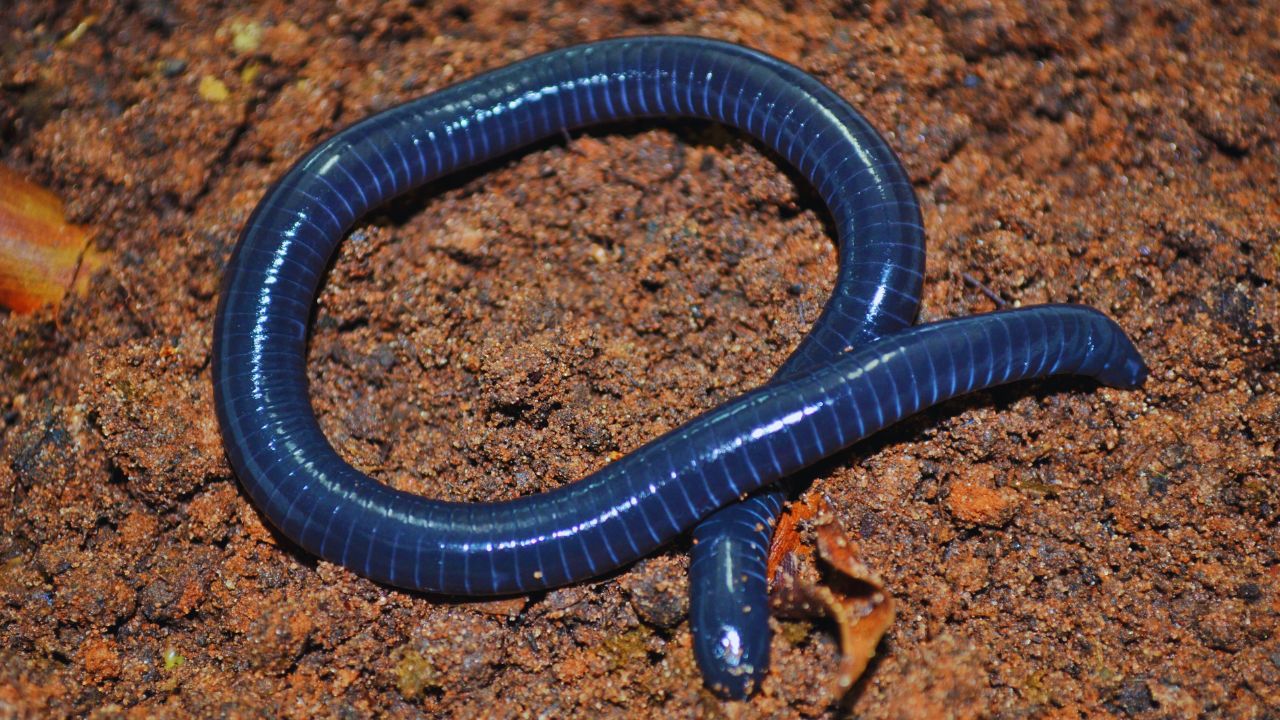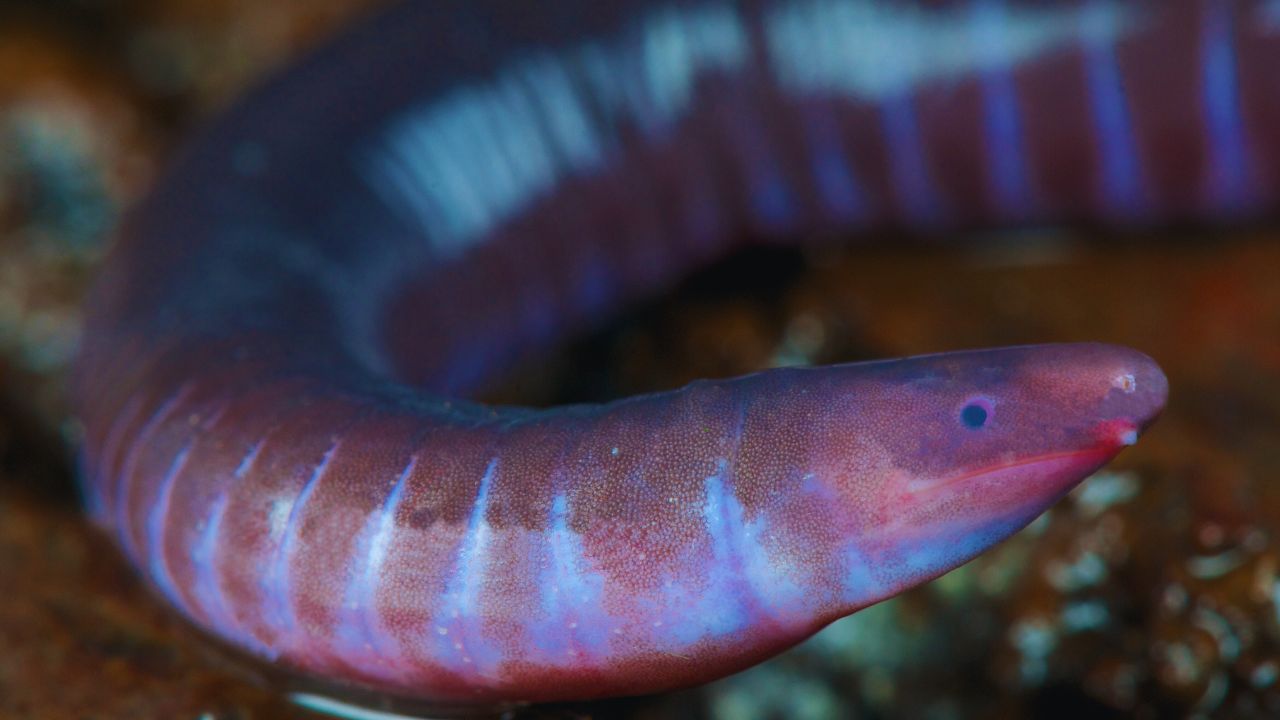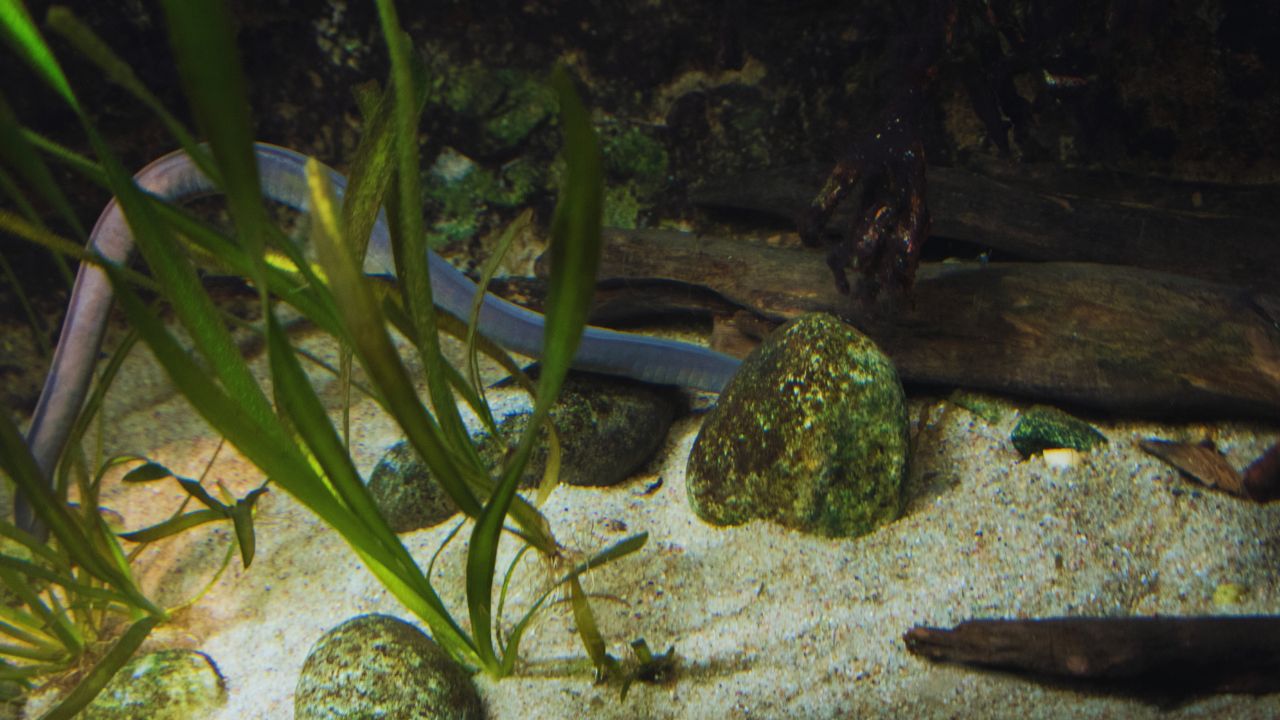In conversations about the natural world, caecilians—a mysterious class of amphibians without legs—are often disregarded. But these amazing animals have a set of anatomical characteristics that make them very well-suited to life below. Their capacity for navigating and thriving in the earth’s depths is evidence of their evolutionary creativity, which has enabled them to endure in such unique settings. This article examines the distinct physical traits of caecilians that enable them to dig very well.

Overview of Physical Characteristics of Caecilians
| Characteristic | Description | Function |
|---|---|---|
| Elongated, Cylindrical Body | streamlined, worm-like shape with no limbs. | Minimizes resistance during burrowing and allows efficient movement. |
| Highly Ossified Skull | A strong, wedge-shaped skull with fused bones. | Acts as a battering ram for burrowing and provides protection. |
| Reinforced, Flexible Vertebral Column | A spine with numerous, closely spaced vertebrae. | Offers flexibility and strength for navigating through soil. |
| Smooth, Slippery Skin | Skin that is smooth and covered in mucus. | Reduces friction, aids in respiration, and provides protection. |
| Reduced or Absent Limbs and Eyes | Limbs are absent or reduced, and eyes are vestigial. | Maintains a streamlined shape and conserves energy in dark environments. |
1. Long and cylindrical morphology
The elongated, cylindrical body of caecilians, which resembles that of a worm or snake, is one of its most distinctive characteristics. This streamlined shape reduces resistance while traveling through dirt or other surfaces, which is essential for effective burrowing. Although it may seem to be a drawback at first, the absence of limbs is really a big benefit in this situation. Limbs would merely increase drag and create impediments in confined areas, impeding the caecilian’s ability to move underground.

Because of their cylindrical form, caecilians may move in a manner akin to a concertina, which makes them perfect for pushing through soil. They can travel through even the most compacted soils because to this kind of movement and their flexible, elongated body. Furthermore, their body’s uniform diameter from head to tail guarantees that they can apply the same amount of pressure to the surrounding substrate, allowing for more fluid and effective movement.
2. Extremely Ossified Head
A caecilian’s skull is another essential adaptation for digging. The heavily ossified (bony) cranium of caecilians, in contrast to that of many other amphibians, gives them the strength and rigidity needed to push through deep dirt and other substrates. The caecilian’s strong skull serves as a battering ram, enabling it to push past barriers that might scare off less specialized animals.
The form of the skull is also enhanced for burrowing. It usually has a wedge-shaped body and a sharp snout that it uses for digging. Because of its form, the caecilian may enter the earth with less difficulty, using less energy to dig and maintain burrows. Because the skull’s bones are fused together, repetitive hits with hard or abrasive materials are less likely to cause harm and increase the skull’s strength.

In addition, the caecilian has unique sensory organs in its cranium that improve its subterranean navigation skills. Among them are tiny, primitive eyes that are often hidden by a covering of bone or skin. Although these eyes are not very helpful for seeing in the conventional sense, they can distinguish between light and dark, which aids the caecilian in finding its way about the burrow. Moreover, caecilians have two tentacle-like structures next to their noses that are very sensitive to environmental chemical stimuli. Even in its underground, gloomy home, the caecilian’s tentacles aid in its ability to identify prey and evade predators.
3. Flexible and Reinforced Vertebral Column
Another adaptation essential to caecilians’ capacity for digging is their vertebral column. Numerous, closely spaced vertebrae that are robust and flexible make up their spine. To endure the mechanical pressures of burrowing, including the pressure of the surrounding soil and the forces produced by the caecilian’s own motions, this blend of strength and flexibility is necessary.

The way the vertebrae are linked permits a great deal of movement without sacrificing structural integrity. The caecilian’s stronger vertebral column guarantees that it can endure the physical demands of its tunnel, while its flexibility allows it to bend and twist its body to traverse through it. The range of mobility provided by the highly specialized intervertebral joints is ideal for the digging lifestyle of caecilians.
Apart from their pliable backbone, caecilians possess a robust muscle that collaborates with their spinal column to enable mobility. The arrangement of their muscles throughout the length of their body enables strong, coordinated contractions, which are essential for moving the caecilian through the earth. Because digging requires the most power, the center of the animal has exceptionally well-developed muscles in this area.
4. Silky, Gummy Skin
Another adaptation that caecilians have made to improve the effectiveness of their digging is their skin. In contrast to several other amphibians, caecilians lack the rough, uneven skin seen on species such as toads and frogs. Rather, their mucous layer, which covers their smooth skin, performs a number of crucial tasks for them as they burrow.

First of all, the caecilians can travel through the dirt more readily because of the skin’s smooth texture, which lowers friction between them and the surrounding substrate. This helps to save energy and lessens the strain on the caecilian’s body, and it is especially significant in settings where the earth is compacted or thick.
Their skin’s protective mucus is also essential to their existence below earth. Since caecilians partially depend on cutaneous (skin-based) respiration, this mucus aids in keeping the skin wet, which is necessary to preserve the caecilian’s respiratory processes. In addition, it is believed that the mucus-created wet atmosphere keeps the caecilian from drying out in its sometimes arid underground environments.
Furthermore, the mucus may have a defensive purpose by acting as a barrier against dangerous parasites and microbes that are often present in the soil. It has also been shown that some caecilian species create poisons in their mucus, which may act as a defense against predators or other dangers.
5. Diminished or absent eyes and limbs
The most notable characteristic of caecilians is probably their absence of limbs, which is a very helpful trait for living underground. For many terrestrial species, legs are beneficial, but for an entity that lives underground, they would be an impediment. Because they don’t have limbs, caecilians can keep their bodies streamlined, which is necessary for getting through compacted dirt and small tunnels.

Cecilians have decreased or missing eyes in addition to diminished limbs. Their eyesight is of minimal utility in the dark, underground environment they live in, and the energy needed to keep their eyes completely functioning would be better used for other physiological functions. Because of this, caecilians have developed tiny, often rudimentary eyes that are sometimes hidden by skin or bone. Though not employed for precise vision, these eyes can nevertheless sense light and dark, which may aid the caecilian in orienting itself within its surroundings.
These sensory and locomotor organs’ decline is an obvious illustration of evolutionary trade-offs, in which the improvement of one function offsets the loss of another. Because they no longer have eyes or limbs, caecilians are better suited to their particular biological niche and are more effective burrowers.
6. Specialized Methods of Muscle and Movement
In addition to their outward morphological traits, caecilians have unique internal modifications that facilitate burrowing. Their musculoskeletal system is very advanced, enabling them to generate the substantial force needed for burrowing. The segmented arrangement of the muscles is necessary for the concertina-like action they use to travel through the dirt.

By alternating between extending and contracting, this movement style enables the caecilian to progressively push through the dirt, using various body parts to press against the substrate. It is quite useful to travel in small areas where it would be impossible to move in a more conventional way, such as by crawling or walking.
Moreover, some caecilians have the ability to move using hydrostatic locomotion, which is the control of fluid pressure within the body cavities. Through synchronized muscular contraction, caecilians may generate pressure waves that go throughout their body, facilitating their movement through the earth.
Caecilians are among the most skilled burrowers in the animal world because of their ability to move through their underground habitat with the use of specialized muscles and distinct locomotion strategies.
Specialized Adaptations of Caecilians for Burrowing
| Adaptation | Physical Trait | Impact on Burrowing Efficiency |
|---|---|---|
| Body Shape | Elongated, cylindrical, with no limbs. | Facilitates movement through narrow tunnels. |
| Skull Structure | Ossified, wedge-shaped skull. | Reduces resistance and provides strength for breaking through soil. |
| Vertebral Column Flexibility | Closely spaced, flexible vertebrae. | Enhances the ability to bend and twist, adapting to different soil conditions. |
| Skin Properties | Smooth, mucus-covered skin. | reduces friction and supports cutaneous respiration. |
| Reduced Sensory Organs | Reduced or vestigial eyes; absent limbs. | Optimizes energy use and supports a streamlined form for subterranean life. |
Caecilians are amazing instances of evolutionary adaptation, with their bodies well suited for subterranean living. Their remarkable capacity for burrowing is facilitated by their long, cylindrical bodies, ossified skulls, flexible spinal columns, smooth skin, and reduction of limbs and eyes. These anatomical traits, together with their distinct movement strategies and specialized muscles, make caecilians among the most skilled and sophisticated burrowers in the animal world.
Although caecilians are not as well-known as other amphibians, they are nonetheless very important to their ecosystems because they help regulate insect populations and aerate the soil. They are a fascinating topic of study for biologists and a monument to the force of natural selection because of their specific adaptations that enable them to flourish in conditions that would be unsuitable to many other organisms.
We could still learn much more about the adaptations that have enabled caecilians to rule the subterranean realm as our knowledge of these fascinating animals expands. They continue to serve as a potent reminder of the variety of life on Earth and the amazing adaptations that allow species to live and prosper in even the harshest conditions in the meantime.
Functional Benefits of Caecilian Physical Characteristics
| Physical Characteristic | Functional Benefit | Ecological Role |
|---|---|---|
| Elongated, Cylindrical Body | Efficient movement through compacted soil. | Enhances burrowing and soil aeration. |
| Highly Ossified Skull | Strength and protection while burrowing. | Enables penetration of dense substrates, aiding in habitat formation. |
| Reinforced Vertebral Column | Flexibility and structural support during burrowing. | Facilitates navigation through diverse soil types, supporting ecosystem balance. |
| Smooth, Slippery Skin | Reduced friction aids respiration and offers protection against pathogens. | Helps maintain health and mobility in subterranean environments. |
| Reduced Limbs and Eyes | Streamlined body and reduced energy expenditure. | Maximizes efficiency in the dark, confined spaces of underground habitats. |





